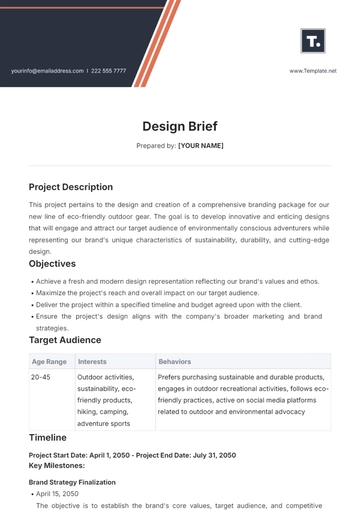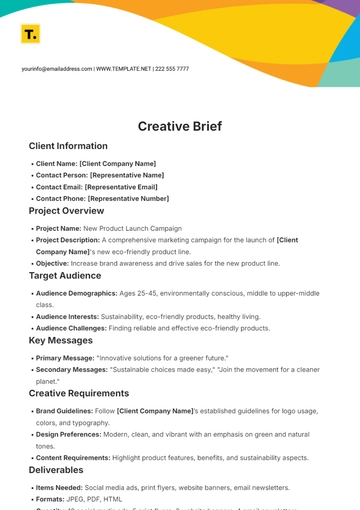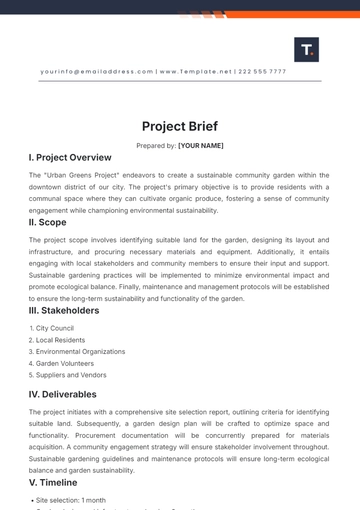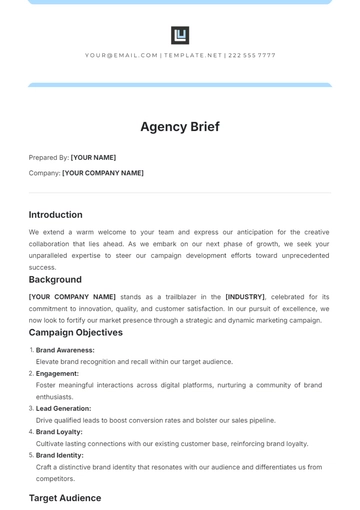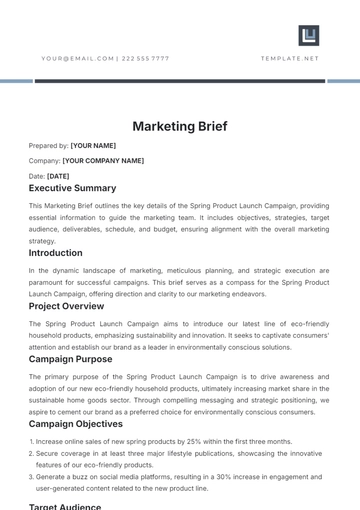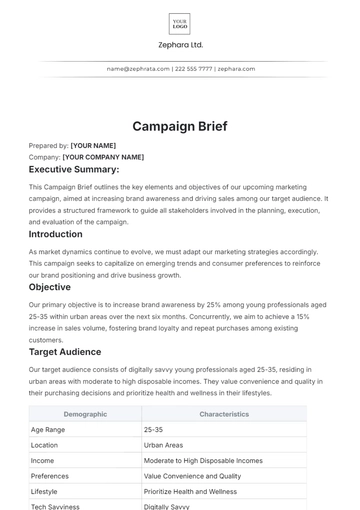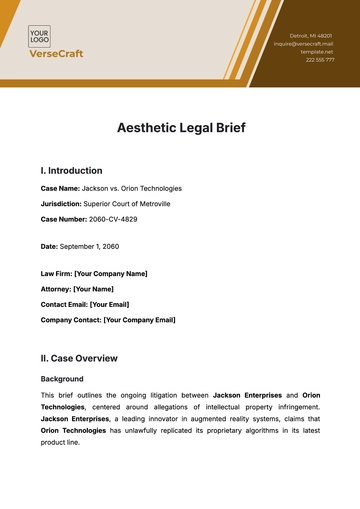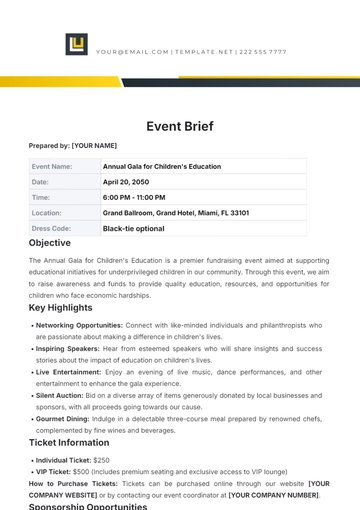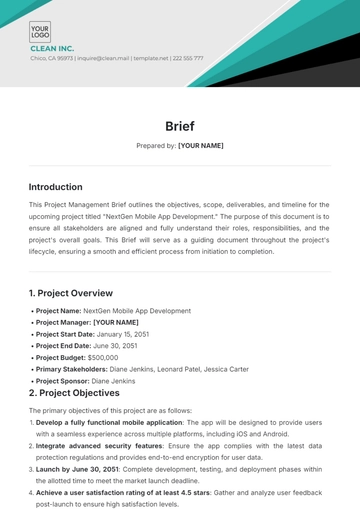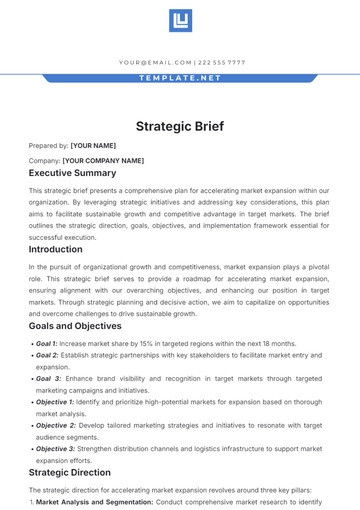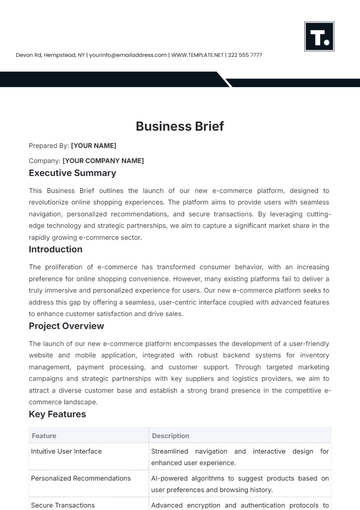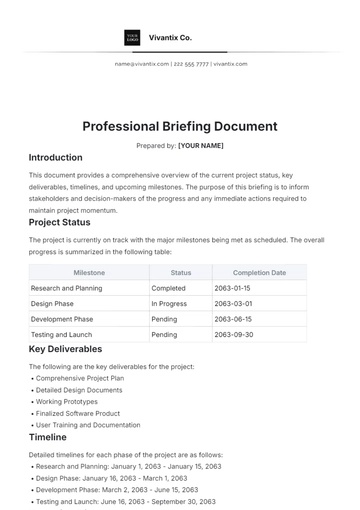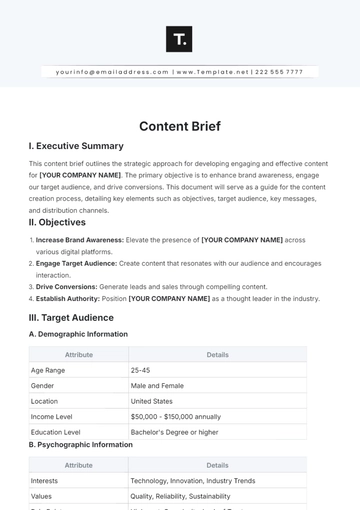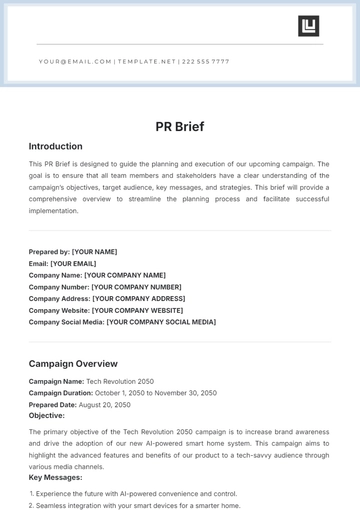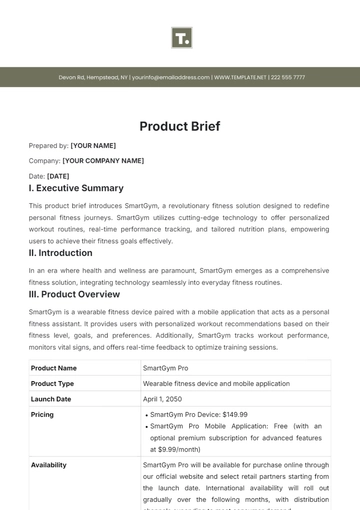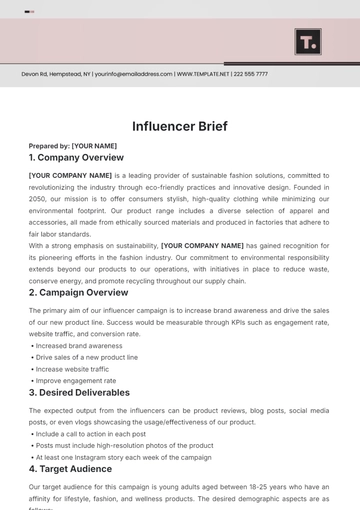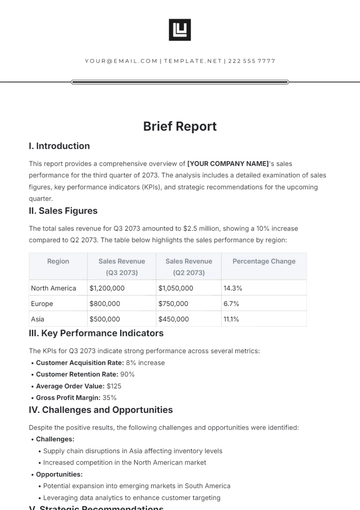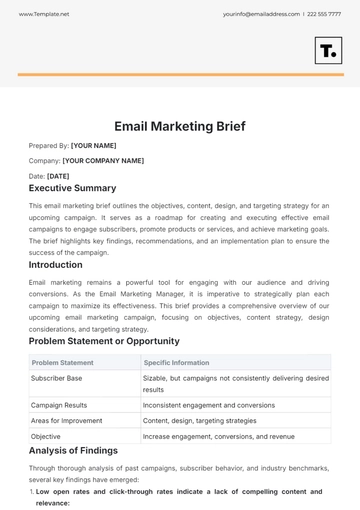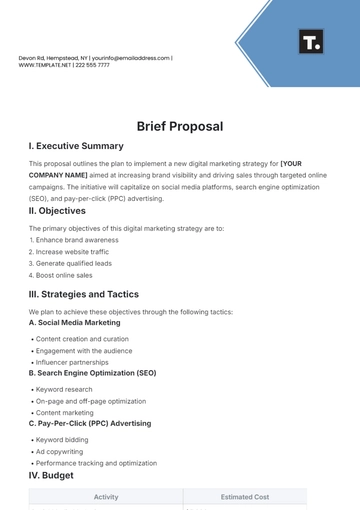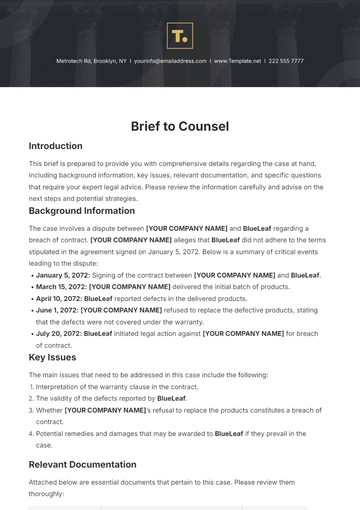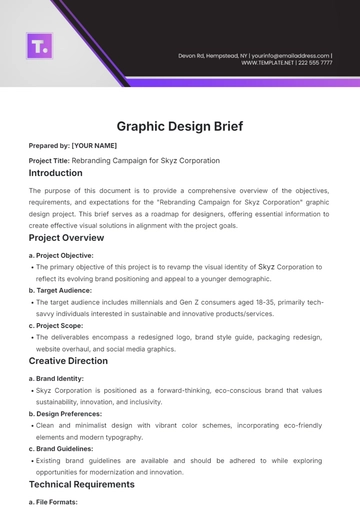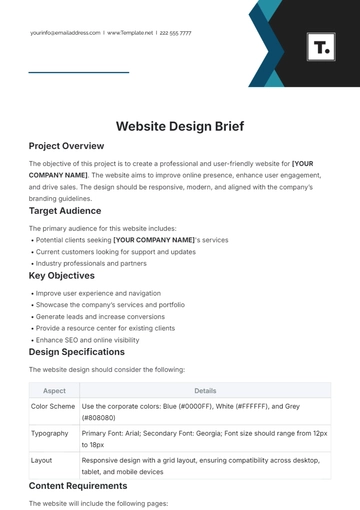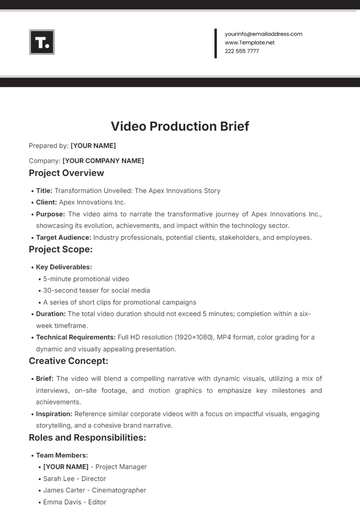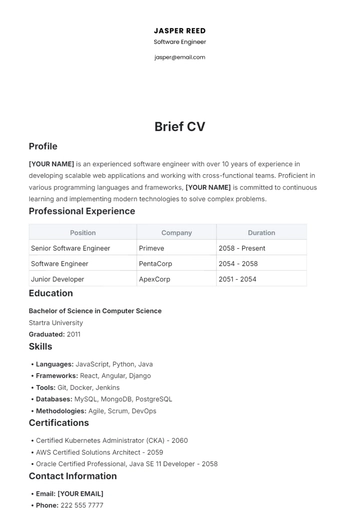Free Strategic Brief
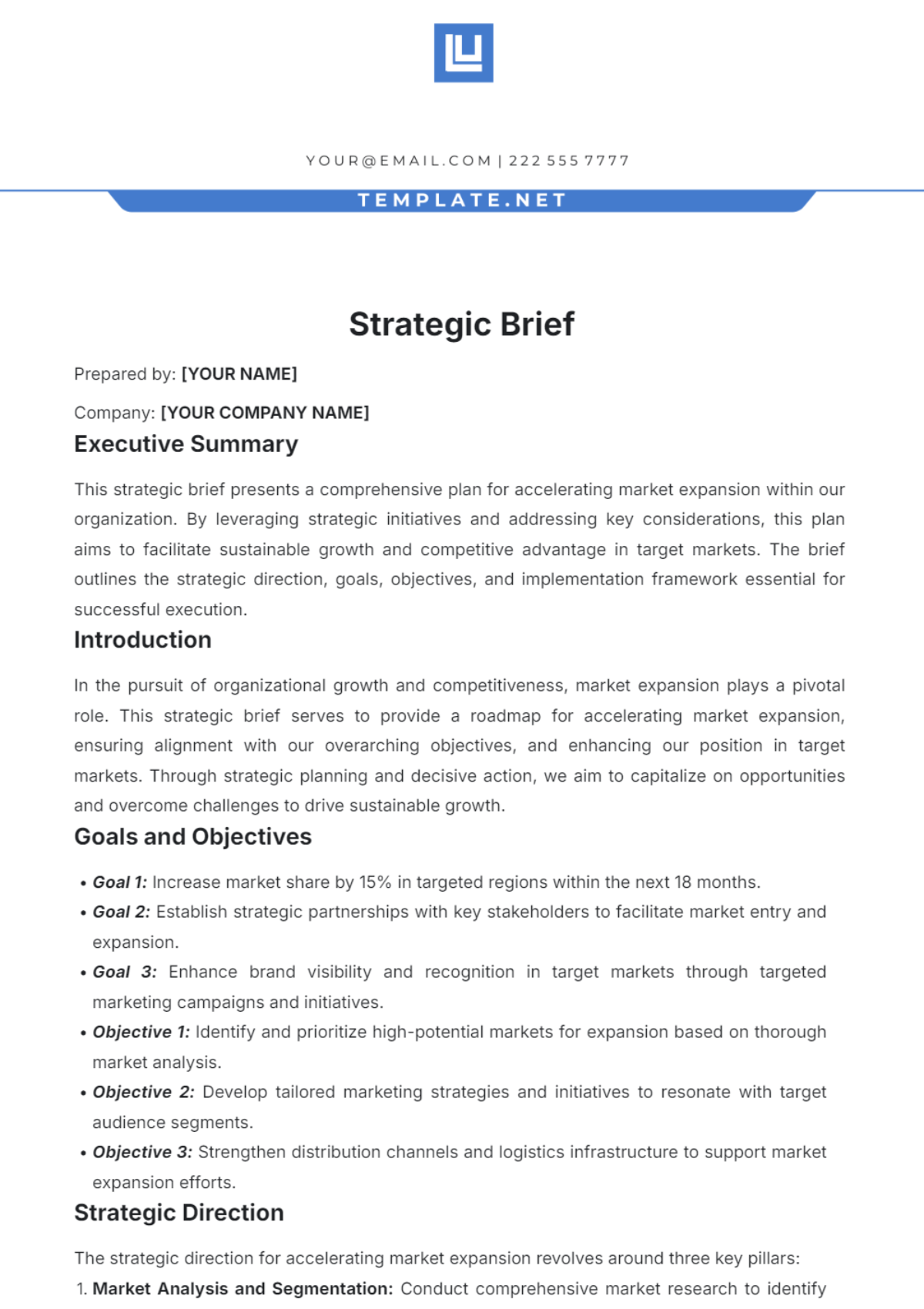
Prepared by: [YOUR NAME]
Company: [YOUR COMPANY NAME]
Executive Summary
This strategic brief presents a comprehensive plan for accelerating market expansion within our organization. By leveraging strategic initiatives and addressing key considerations, this plan aims to facilitate sustainable growth and competitive advantage in target markets. The brief outlines the strategic direction, goals, objectives, and implementation framework essential for successful execution.
Introduction
In the pursuit of organizational growth and competitiveness, market expansion plays a pivotal role. This strategic brief serves to provide a roadmap for accelerating market expansion, ensuring alignment with our overarching objectives, and enhancing our position in target markets. Through strategic planning and decisive action, we aim to capitalize on opportunities and overcome challenges to drive sustainable growth.
Goals and Objectives
Goal 1: Increase market share by 15% in targeted regions within the next 18 months.
Goal 2: Establish strategic partnerships with key stakeholders to facilitate market entry and expansion.
Goal 3: Enhance brand visibility and recognition in target markets through targeted marketing campaigns and initiatives.
Objective 1: Identify and prioritize high-potential markets for expansion based on thorough market analysis.
Objective 2: Develop tailored marketing strategies and initiatives to resonate with target audience segments.
Objective 3: Strengthen distribution channels and logistics infrastructure to support market expansion efforts.
Strategic Direction
The strategic direction for accelerating market expansion revolves around three key pillars:
Market Analysis and Segmentation: Conduct comprehensive market research to identify high-growth opportunities and segment target markets based on demographics, psychographics, and behavior patterns.
Strategic Partnerships and Alliances: Forge strategic partnerships with local distributors, suppliers, and industry influencers to facilitate market entry and gain access to distribution networks.
Brand Visibility and Differentiation: Enhance brand recognition through targeted marketing campaigns, product positioning strategies, and customer engagement initiatives to differentiate our offerings in the market.
Key Considerations
Regulatory Compliance: Ensure compliance with local regulations and legal requirements in target markets to mitigate risks and maintain ethical business practices.
Cultural Sensitivity: Tailor marketing messages and brand communications to resonate with diverse cultural preferences and norms prevalent in target markets.
Competitive Landscape: Conduct competitive analysis to identify key competitors, assess their strengths and weaknesses, and formulate strategies to gain a competitive edge.
Implementation & Monitoring
The implementation of the market expansion initiative will involve the following steps:
Establish a dedicated cross-functional team responsible for executing the initiative.
Develop a detailed implementation plan outlining tasks, timelines, and resource requirements.
Allocate necessary resources and budget for marketing campaigns, partnership development, and operational expansion.
Implement robust monitoring and evaluation mechanisms to track progress, measure performance against predefined metrics, and make data-driven adjustments as needed.
Conclusion
In conclusion, the market expansion initiative presents a significant opportunity for our organization to achieve sustainable growth and enhance competitiveness in target markets. By adhering to the strategic direction outlined in this brief and addressing key considerations, we can capitalize on opportunities, mitigate risks, and position ourselves for long-term success.
- 100% Customizable, free editor
- Access 1 Million+ Templates, photo’s & graphics
- Download or share as a template
- Click and replace photos, graphics, text, backgrounds
- Resize, crop, AI write & more
- Access advanced editor
Unlock strategic excellence with Template.net's Strategic Brief Template. This editable and customizable tool empowers you to craft detailed plans tailored to your objectives. Modify content effortlessly using our Ai Editor Tool, ensuring precision and adaptability. Streamline decision-making and propel your organization forward with this essential resource, designed to enhance strategic planning processes with ease and efficiency.
